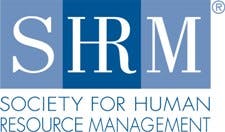For the first time in the history of the profession, human resource practitioners now have a uniform way to measure and compare one of HR’s oldest metrics. The American National Standards Institute has accepted the profession’s proposal for determining cost-per-hire.
 “The approval of this standard as an American National Standard establishes a milestone for the HR profession. It affirms that HR has indeed a ‘technology’ that its professionals must apply, improve and preserve,” said Lee Webster, SHRM’s director of HR standards. “The HR profession and its stakeholders can now begin to make business decisions based on credible, transferable, and inter-operable human capital analytics.”
“The approval of this standard as an American National Standard establishes a milestone for the HR profession. It affirms that HR has indeed a ‘technology’ that its professionals must apply, improve and preserve,” said Lee Webster, SHRM’s director of HR standards. “The HR profession and its stakeholders can now begin to make business decisions based on credible, transferable, and inter-operable human capital analytics.”
Committees are working on additional standards
Webster leads the standards program, which is sponsored by the Society for Human Resource Management. In this role, he worked with a 42-member committee of volunteers that included academics, consultants, practitioners, and others to develop this first standard. The task force, similar to others, was the first to incubate a standard and usher it through the demanding process.
Other committees are working on standards for such things as job descriptions, diversity, performance management and even for measuring the financial value of a company’s human capital. Just recently, SHRM’s proposal for a workforce planning standard became available for comment.
There are no surprises or “gotchas” in the cost-per-hire standard; its long development (some two years in the making), and the even longer vetting process are by design intended to ensure both deliberation and thoroughness. To a great extent, companies that measure cost-per-hire already take into account most of the elements detailed in the new standard. Expenses for advertising, candidate travel, recruiter salaries, and so forth are undoubtedly already being included in typical CPH calculations.
Where the standard provides particular guidance is in those areas where there may be wide differences from one employer to another. For instance, the standard offers help in deciding how to handle commissions, when to include employee referral fees, and how to account for general office expenses.
Defining what, exactly, is a “hire”
Indeed, the very issue of “what is a hire?” is addressed in the standard, which offers this advice:
The decision of which definition of “hire” to use (in this example, starts vs. offers accepted) affects exactly what the CPHI statistic is
measuring. If starts are used, the CPHI is measuring the average cost of successful hiring outcomes of the recruiting effort. If offers accepted
is used, the CPHI is measuring recruiting productivity.”
“The team wanted to create a standard that would be both accepted by the CFO’s office and practical to implement by HR,” said Jeremy Shapiro, cost-per-hire work group chairman and executive director of Morgan Stanley. “I think we hit the mark.”
No practitioner or employer is obligated to follow the standard. Those who do, however, will be able to compare their hiring costs to those of their industry, confident that it’s an apples-to-apples comparison.
Even for those who don’t apply the standard rigorously, it will still give them a guide to know what HR practitioners agree should be counted.
